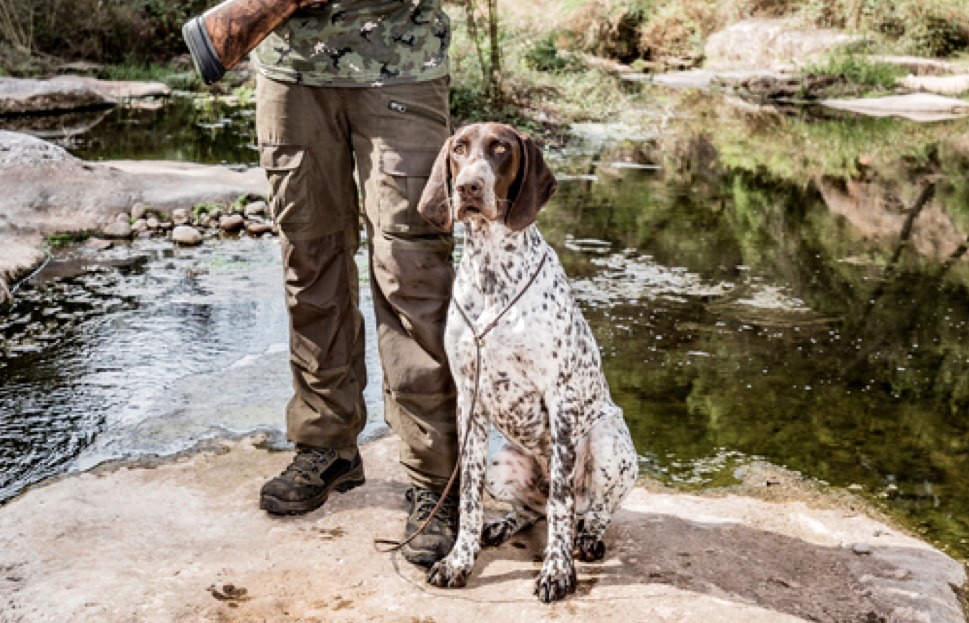
German Wirehaired Pointer
With a face only a mother could love, the German Wirehaired Pointer’s two-layer coat protects their body from scratches and cold, and is relatively waterproof. Wires come in a wide variety of color combinations, from pure brown or black, to almost totally white, with ticking and spots or even a roan coloration.
Loyal and hard working, wirehairs are master trackers with lots of prey drive, and will bust the brush like a Labrador when needed.
German Wirehaired Pointers were developed in the 1850s to serve as both game-getter and family pet, when commoners were finally allowed to hunt as Europe became more democratic. A hunter needed one dog that could do it all: find and point birds, fetch on land and water, track wounded game (big and small), live with and protect the family.
And that dog needed physical characteristics that would serve him in all situations: in addition to the two-layer coat and “furnishings” (beard and eyebrows), breeders added webbed feet for swimming. They incorporated foundation breeds, including the German Shorthaired Pointer, Stichelhaar, Griffon, and Pudelpointer among others, to create the ultimate hunting dog.
In Germany, wirehairs still hunt everything from birds, ducks and rabbits, to vermin, stag and wild boar. Here in the states, we primarily use wires on upland game and waterfowl.
While they can be laid-back in the home, German Wirehaired Pointers are “hard-wired” to hunt, and need an owner who would rather be in the field than on the couch.
Let’s Go Hunting trivia: Host Scott Linden’s favorite breed. His hunting companion is Three Devils Yankee’s Buddy, a five-year-old wire that stars in the show’s “Buddy & Me” segment.